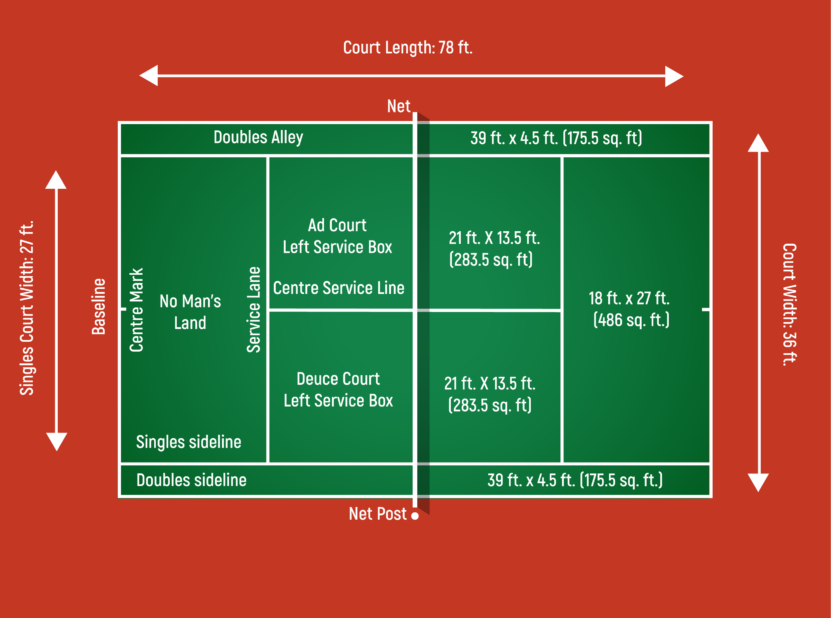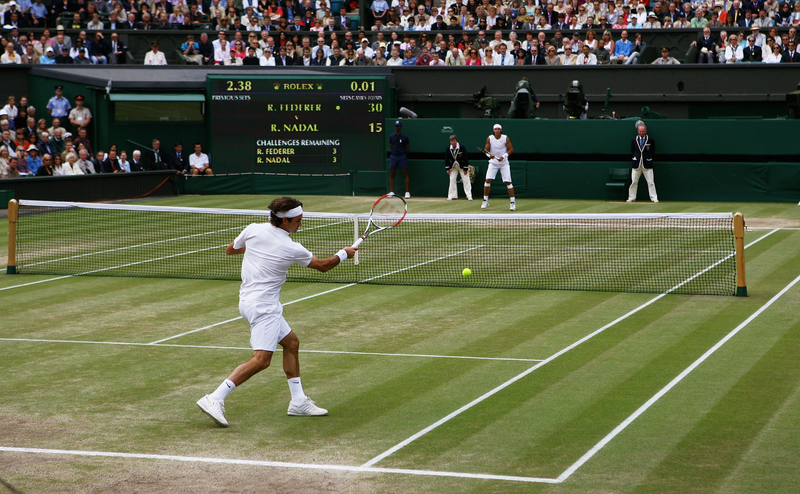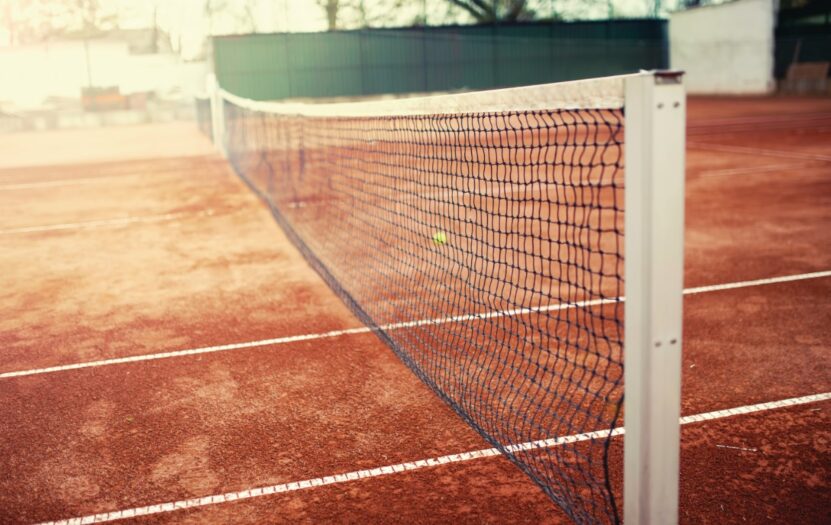What Are The Dimensions Of A Tennis?
Without any doubt, tennis is one of the most popular and favorite games among millions of people of different ages all over the world. Playing tennis helps you to be in good physical shape, as it’s a great workout, where almost every muscle is used. It’s a perfect game to develop your mental skills as well as strategic thinking.
In addition, tennis gives social benefits as you can play with your friends or make new ones. All you need for a game is a racket, a partner and a tennis court. However, for a better understanding of the game you should know the rules, tennis court layout and dimensions. Let’s find out what tennis court is and which areas it has in this article.
What Is The Size Of A Tennis Court

A tennis court is a firm rectangular surface with a standard size:
78 Feet (23,77 meters) Long
27 Feet (8,23 meters) Wide for Singles Matches | 36 feet (10,97 m) wide for Doubles Matches.
The total tennis court playing area is 2,808 square feet when the singles court measures 2,106 square feet. Every court consists of different areas and components, this tennis court diagram will demonstrate you in detail, what are the main parts of a tennis court.
Tennis Court Areas
-
“No man’s land”

It is an unofficial term, which refers to the largest box on the court, situated between the service line and the baseline. This part of the court is considered the most difficult to play in, as the player is too close to the net to hit confident groundstrokes and too far to perform a proper volley, so he should avoid playing there. The size of “no man’s land” is 18 feet x 27 feet (486 square feet in total).
-
Left and Right Service Box
The two same sized boxes divided by the center service line are the left and right service boxes. They are also called the deuce service box and the ad service box according to the scoring system. The size of each box is 21 feet x 13.5 feet (283.5 square feet). These boxes are important for serves, when serving the player should place the ball in the opponent’s service box, diagonally opposite from the place he stands.
-
Doubles Alley
This is the space between the singles and doubles sidelines, which is used only for doubles game, as if you are playing singles all shots landed in the doubles alley are out. The size of this part of the court is 39 feet x 4.5 feet (175.5 square feet).
Tennis court lines
-
Baseline

This line plays a significant role in the game, as this is where a player hits groundstrokes and serves. The baseline is situated at the back of the court and runs parallel to the net, it’s size is 36 feet for doubles and 27 feet for singles. The balls that land inside the baseline or on the line are considered good, even if they touch the line slightly; the shots that land beyond this line are called out.
-
Center Mark
This is a small mark (4 inches long) at the center of the baseline, which splits the court into two sides and runs perpendicular to the net. The player who serves should stand on the correct side of this mark, depending on the score. The center mark is a good point of reference as well, as during tennis training the coaches often tells you to return to the center of the baseline after you hit a forehand or a backhand.
Tennis Service Area
This part consists of a center service line (21 feet long on each part of the court), which divides the service area into two same sized rectangles, and a service line (27 feet wide) which runs parallel to the net and is located between the baseline and the net. These service boxes are the space in which a tennis ball must land, the serve that lands beyond these lines is considered out.
-
Singles Sidelines
The singles sidelines (39 feet long) are the side boundaries of the singles court, which run perpendicular to the net. Remember that even if the smallest part of the ball touches this line, it’s called in.
-
Doubles Sidelines
The doubles sidelines (39 feet long) are the side boundaries of the court for doubles matches, they are located a few feet outside the singles and run perpendicular to the net.
Tennis Net and Other Accessories

A net (42 feet long, 3 feet 6 inches high at the posts, 3 feet high in the middle) is stretched across the full width of the court, parallel with the baselines and divides the tennis court into two symmetrical sides. The net should be made properly and touch the ground surface, so that the ball cannot get through during a game. In order to put the net in the middle of the court you will need net posts (3,5 feet tall and 6 inches wide), a metal cable, a white strap (2 inches wide), which controls the height and is fastened to the ground and a white band (2-2.5 inches in depth).
Make sure before starting the game that the net is installed at the right height, as even a small change in the dimensions of the tennis net can affect the accuracy of the player’s shots. You can carry a measuring tape with you, so you’ll be able to control this factor.
To sum it up, tennis court labeling determines the boundaries for various shots, so understanding the tennis court dimensions and its layout is a significant part of the game. Hopefully, after reading this article you got these characteristics sorted out and can focus on your tennis skills now.
Its also a great sport that is able to be played both indoors and outdoors making it perfect for eco friendly sports.

